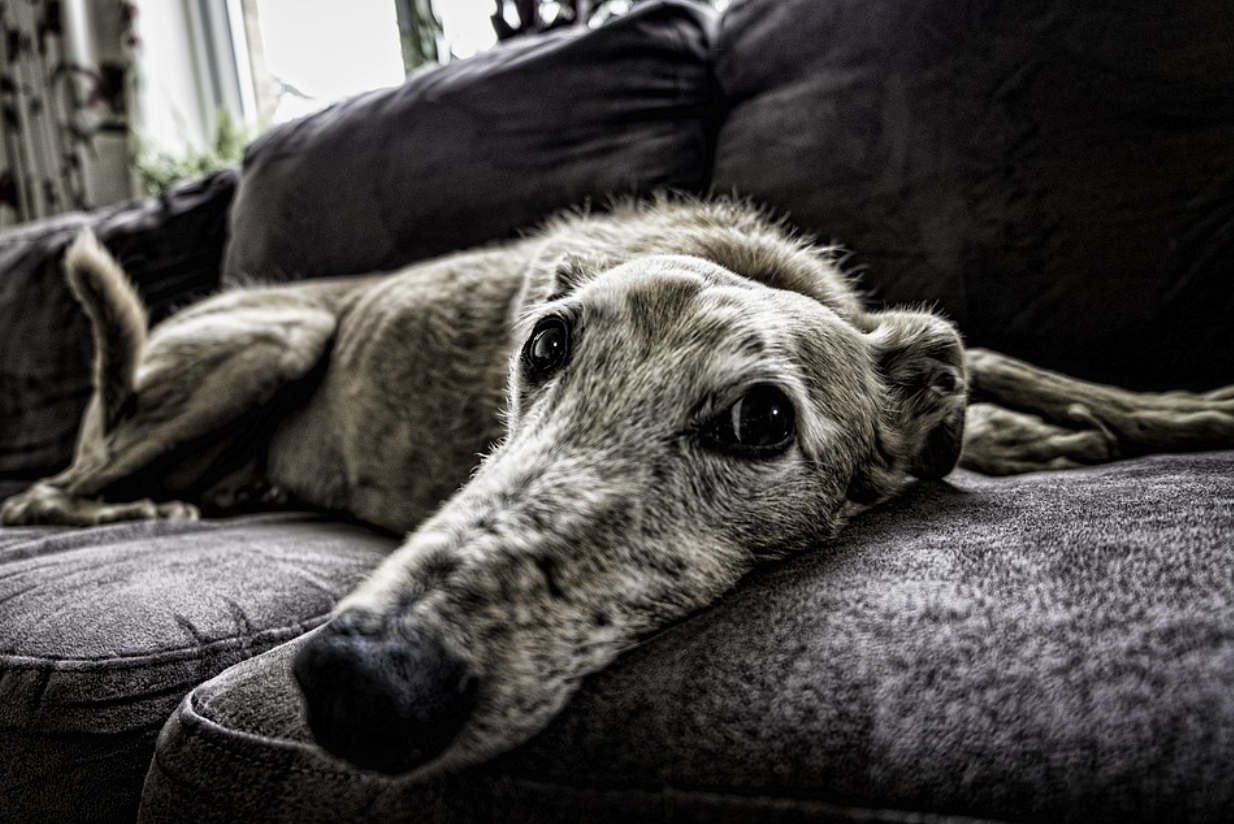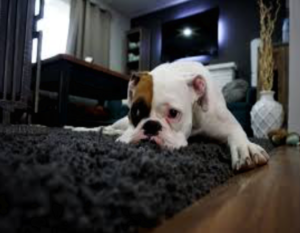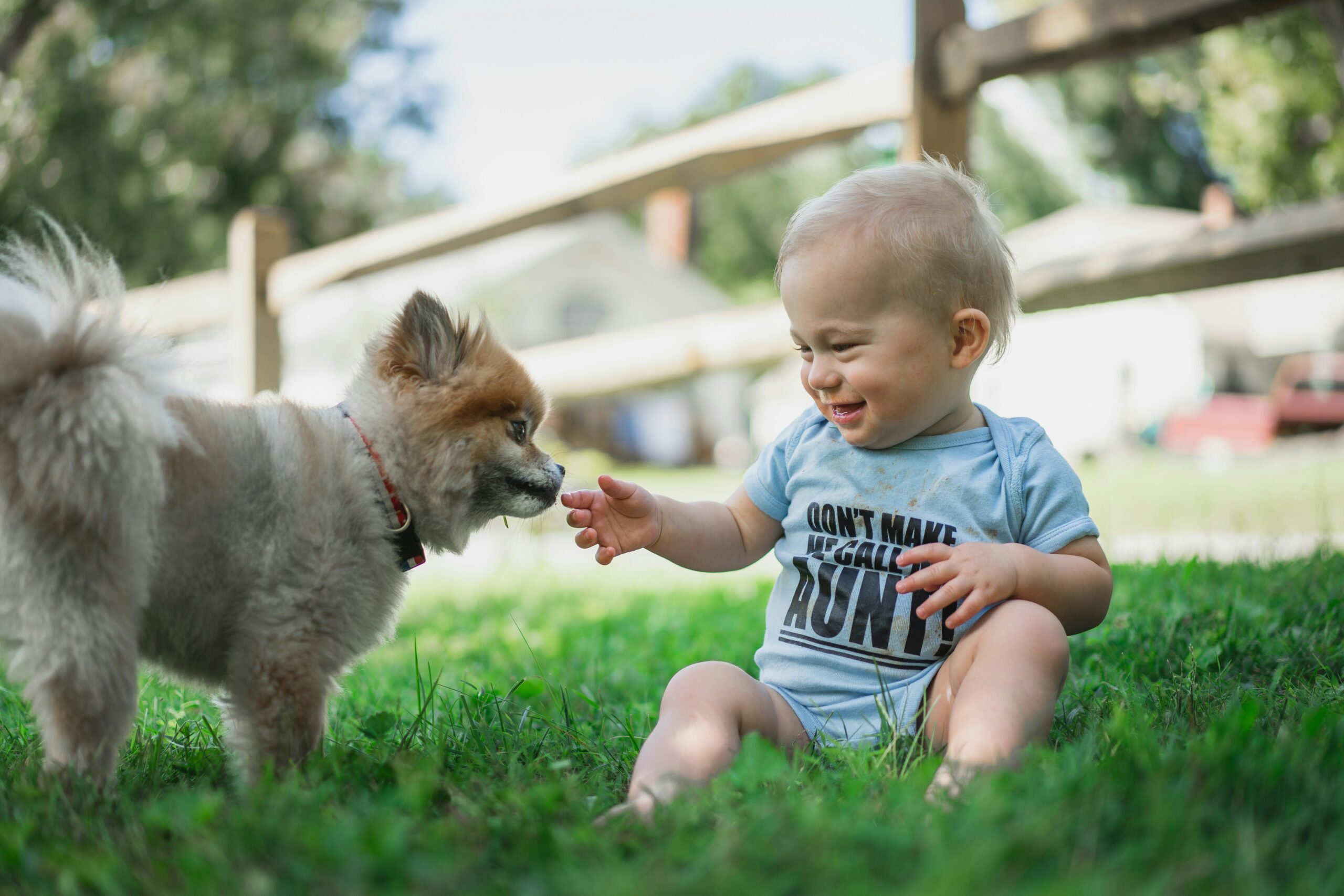You may notice that as your dog heads into his older years, he may not be able to run as fast, jump as high, or fetch quite as many sticks as he used to. Like humans, our furry friends tend to slow down a bit as they get into their golden years. However, this doesn’t mean it’s time for them to retire to the couch. In fact, it’s important for your pooch’s physical and mental well being that he maintain a regular exercise routine.
Rather, it is important that you and your dog continue to do some exercise together.
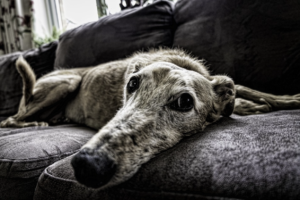
Image courtesy of Pixabay
The key to keeping your older dog active is tailoring his exercise and activities to meet his specific needs. Maybe he can no longer be your marathon training partner, but that doesn’t mean he won’t look forward to daily walks or games with you.
It is important to understand the causes contributing to your older dog’s limited mobility in order to structure his activity for maximum enjoyment and comfort.
Causes of Limited Mobility
Dogs can suffer from arthritis and joint degeneration as they age. Sometimes, they will experience pain and stiffness as a result of earlier injuries.
One of the most common causes of limited mobility in older dogs is osteoarthritis, explained Dr. Heidi Lobprise, DVM, DAVDC and spokesperson for the International Veterinary Senior Care Society.
Osteoarthritis is a degeneration of joint cartilage and underlying bone.
Some dogs suffer from congenital issues like hip dysplasia, a condition that causes the hip joints not to develop normally, ultimately leading to loss of hip function. This is more common in certain large breeds.
It is important to know the difference between arthritis and stiffness, as explained in in this blog on keeping your senior dog happy and mobile.
Bulldog Photo courtesy of Pexels
Managing Arthritis, Stiffness, and Aching joints
As anyone who has ever been in pain knows, pain does not inspire anyone to become active. The good news is there are steps you can take to manage your dog’s pain. Managing your dog’s painful and stiff joints is crucial to keeping him active.
Consider taking a load off your furry friend’s joints by doing the following:
-
- Replacing a regular dog bed with denser padding or an orthopedic pet bed to better cushion aching joints.
-
- Providing ramps to help your dog keep moving around the house with ease.
-
- Place ramps or stairs by familiar places like couches and beds to make access easier.
-
- Use a ramp or physically lift your dog in and out of the car.
- Place rugs or mats on slippery surfaces (such as tile and hardwood floors) so it is easier for your dog to keep his grip.
Keep Moving
Who has not heard that staying active keeps you young? The same goes for our canine counterparts. Providing an environment full of both physical and mental stimulation will help keep your dog feeling young.
Exercise, even in small amounts, provides numerous benefits for your furry best friend. Among the advantages of physical activity are the following:
-
- Helps maintain healthy body weight and overall general health.
-
- Prevents obesity, which can lead to risk of diabetes, heart disease, and cancer.
- Helps maintain the health of muscles and joints, staving off stiffness and arthritis.
If your dog has not been exercising regularly, remember to start out slowly. The point is to have fun together while staying fit. So, don’t start out training for the Ironman Triathlon if Fido’s last big outing was a stroll from the couch to the food dish.
Weigh in
Weight management is crucial in keeping your senior dog as active as possible. Just a few extra pounds on your pooch adds additional strain to his joints. This only aggravates arthritis and other conditions, making it more difficult for him to get around.
However, exercising together is a great way to keep those extra pounds off and lower your dog’s (and your own) risk of other health complications.
It is also a good idea to talk with your vet about your dog’s diet to ensure you are feeding him the appropriate foods and amount for his senior nutritional needs.
Keep your Dog’s Mind Active
Whoever said, “you can’t teach an old dog new tricks” was simply incorrect. Teaching your older dog some new tricks is a great way to keep your pup mentally stimulated and alert.
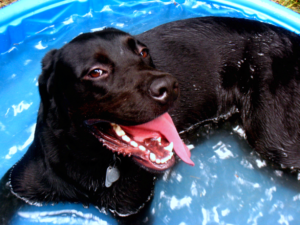 Photo courtesy of Flickr
Photo courtesy of Flickr
Teaching new tricks is a great way to get your dog up, moving, stretching, and using his muscles.
-
- Try buying your dog some new toys.
-
- Buy some puzzle toys that require your dog to figure out where to put the puzzle pieces in order to get the toy to dispense treats/food.
- You can try some toys that dispense treats as they get rolled in certain directions. This will encourage your dog to chase (even at a slow pace) after the toy.
Essentially teaching an older dog new things doubles as a mind/body workout. And this can be done almost anywhere, including indoors!
Smell the Roses
Though many people spend time training their dogs not to do it, try letting your senior dog sniff while on walks. It gives him some freedom to wander. Why not allow him to enjoy his surroundings? After all, he’s earned it.
Try a New Activity
If your pup is getting bored with the same daily routine, switch it up. Instead of the same daily walk, take him for a swim. If he likes to socialize, take him for a playdate with another dog of a similar energy level.
An Ounce of Prevention
Some old sayings stick around for good reason. “An ounce of prevention is worth a pound of cure” is one of those sayings, and it holds true for our four legged friends as well.
You don’t need to wait until your dog enters his golden years to invest in his health. There are many things you can do throughout his life to set him up for a healthy and active lifestyle throughout all of his years so that you can have win-wins when asking friends and family to set for him while on a vacation or go to the vet fear free.
Here are a few suggestions that will set your dog up for a lifetime of activity:
-
- Avoid nonsteroidal anti-inflammatory medications when possible. They may treat the symptoms, however they also come with side-effects.
-
- Feed your dog a natural, grain-free diet made with wholesome ingredients; or
-
- Make your own dog food from nutritious, locally grown and sold ingredients.
-
- Make sure you are feeding your dog an appropriate food for his age and activity level.
- Introduce natural supplements into your dog’s diet.
Just like you might take a daily multivitamin to ensure you are getting the necessary nutrients, your dog will benefit from a natural, quality multivitamin. Your dog will benefit from an organic, quality multivitamin made specifically for the support of dogs’ organ health. You can ask your veterinarian what he or she recommends based on your dog’s particular health needs.
Remember, your dog looks to you to keep him healthy and happy. That might mean getting yourself out for a walk or a game of fetch when you are not feeling your best. Keep in mind, you and your dog will both feel better after getting out for some activity. It will also strengthen the bond between you.
And the more active you are, the more active you will continue to be, ultimately increasing the number of healthy and mobile years you will have together.
Sources consulted:
This article was contributed by Lauren Lee of https://peterdobias.com/.
Have great content or product you’d like to share? Contact us and let’s hear it! We are accepting guest bloggers at this time.

